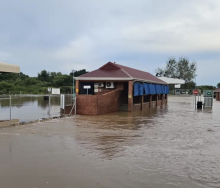According to the Observatory for Economic Complexity, Namibia depends on countries such as China, Spain, Belgium, Botswana and South Africa for 80% of its food consumption, most of which is imported through various land borders with its historical neighbour to the south.
Looked at differently, at least 12.59% of all Namibian imports are food, stats aggregator Trade Economics says.
This figure could be increased even more through South Africa if it wasn’t for various challenges impeding volume growth, Terry Pieterse, retail general manager for Namibian domestic distributor Seapride Foods, has said.
“We get the majority of our product from South Africa. So if anything is happening there, it usually has a direct impact on what happens in Namibia.”
Because many of Seapride’s deliveries are permit-related, regulatory compliance makes up much of the company’s service commitments and standards set down by trade partners such as the European Union.
“Namibia still has EU status for its exports, so there’s a strong focus on staying well within food safety parameters for distribution, especially regarding chilled goods. They close the borders immediately if anything is untoward in South Africa.”
Pieterse says it’s understandable that agriculture minister Calle Schlettwein and related government departments must keep Namibia’s agronomic sector free from bird flu and foot-and-mouth disease outbreaks.
“We don’t want to bring in anything that could possibly jeopardise our EU status.”
Regular power outages in South Africa, brought about by energy utility Eskom trying to avoid a grid collapse, have contributed to import constraints.
Add to this labour issues experienced in South Africa’s road freight sector and related safety concerns, and you have a perfect cocktail for supply chain complexity.
“It’s become a big concern for us, but we just have to deal with it,” Pieterse said.
“Warehousing for frozen goods in Namibia is limited, and our market is also not that big, so it doesn’t make sense to overstock.”
Some products are more forgiving, such as the dairy Seapride brings in from George on the Cape South Coast and canned goods from Gauteng on the Trans-Kalahari Corridor.
“We’re looking at 45 days and more to bring in some of these products, so we’re buffered against incidentals. However, some products have much shorter times. When you start talking about two weeks from source to shelf, it becomes very difficult.
“Even contemplating seven-day supply is simply out of the question.”
Unfortunately, it means some products can’t be brought in, Pieterse pointed out.
“There are some very nice products in South Africa that we would love to bring in for our clients in Namibia, but it takes two to three days to load, and if the state vet gets involved and items aren’t sealed, it triggers a whole chain of events which means it’s not worth it.”
For example, getting potato products into Namibia has become challenging.
“Production has decreased in South Africa, most likely because of load shedding, which means some growers are shortening supply lines. If capacity drops from 100 to 50% for whatever reason, it makes business sense to concentrate on your local market," Pieterse said.
Although alternative suppliers have been considered in places like Zambia, regulatory requirements make it difficult for Namibia to bring in frozen chips.
“We’re looking at a possibility in Delmas, but only time will tell whether or not we’ll soon see more fries on our shelves.”
- Don’t miss Freight News' special focus feature on Namibia’s logistics sector, available on 19 May.













